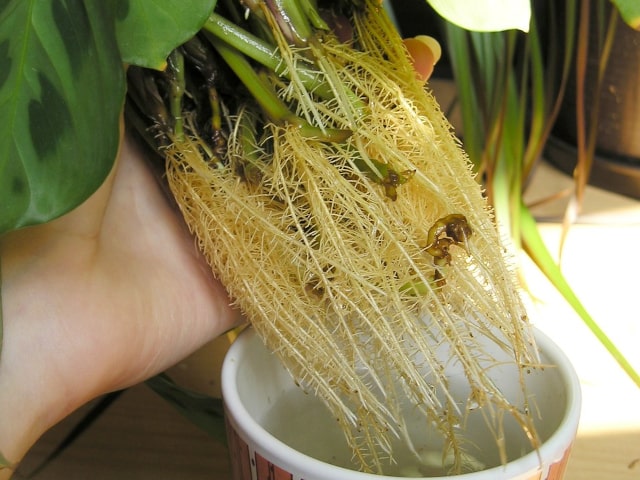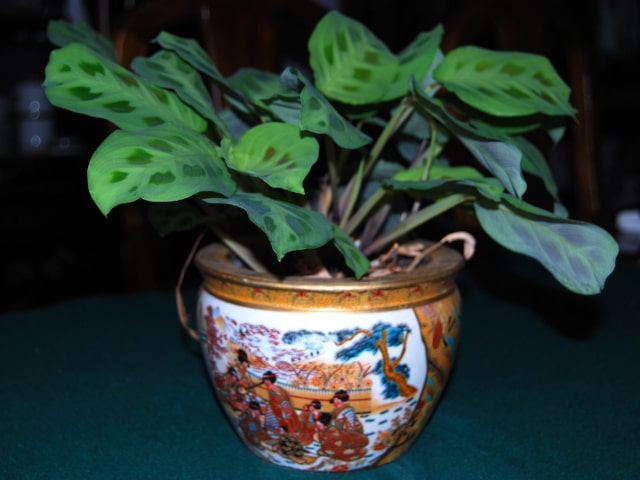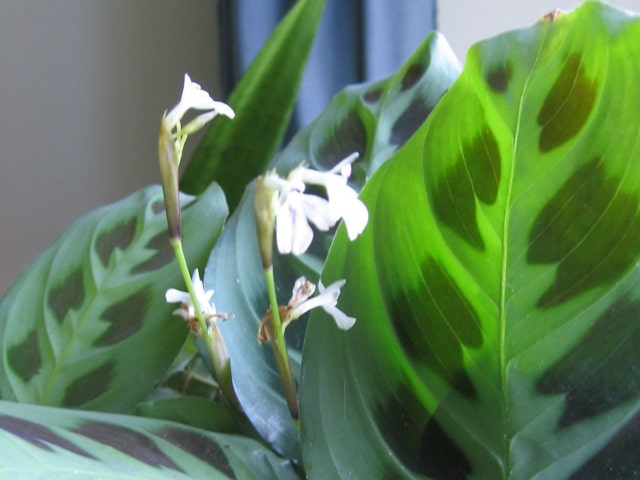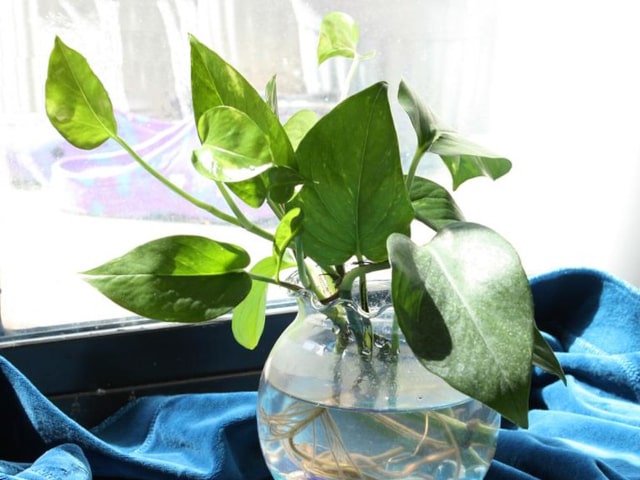
Prayer plants are extremely popular among many gardeners, particularly because of their gorgeous leaves that come in many different color variations. This beautiful foliage on Prayer Plant is eye-catching so it is not surprising that many gardeners choose to grow these plants in their homes.
Prayer plants are excellent houseplants, but they tend to grow quickly. This means that you will need to move your Prayer plant to a larger pot as soon as it grows too big for its original one. It is important to report your Prayer plant regularly to accommodate for this fast-growing.
When to Repot Prayer Plant?
It is very important to know when it's time to report your Prayer plant. Keep in mind that this plant can be sensitive and it's not always easy to care for. It does not like any unnecessary changes to its environment. Because of this, you need to know when it's time to repot it. You will need to report it even if it looks perfectly healthy. Keep in mind that these plants are very fast growers, so they will outgrow their pots every few years, if not sooner. Once that this happens, they will need a larger container. You have to repot your Prayer Plant to a larger container in order to give its roots more space to spread out. A larger container also gives your plant more access to nutrients from the soil.
It is important to remember that Prayer plants tend to grow very quickly, particularly if they have great conditions for thriving, and if you care for them well in general. Prayer plants should be reported every 2 to 3 years. However, you always need to check your plant regularly in case it needs repotting more frequently than this.
It is important to recognize signs that your Prayer plant needs repotting. Such plans have a lot of growth on the top and can be heavy. Containers that are light may even topple down or fall under the weight of such a plant. If you notice this, it might be a time to report your Prayer plant.
Another thing to keep in mind is that Prayer plants that need repotting will require more water than usual. If you notice that you need to water your plants more often than usual, it might be a sign that it's time to repot. It happens because more roots in the small container diminish the amount of the available soil for the plant, so it requires water in more frequent intervals.
Similarly, you may also notice that after watering, the soil won't retain moisture. You can identify this if you notice that the water leaves through the drainage holes much faster than usual. This is also caused by numerous roots in a small pot and it is also a telling sign that your Prayer plant needs repotting.
Also, if you notice roots peeking through the drainage hole it is a sure sign that your Prayer plant needs to be moved to a larger container. It current pot is too crowded for the roots so they started growing out of the holes on the bottom.
Other signs you may notice is that your Prayer plant has a very slow growth suddenly, or it may even stop growing altogether. Also, a sign that it’s time to repot include yellowing leaves, dying leaves or roots coiling in on themselves.
If you notice any of these signs, or even better, a combination of more of these signs, it may be a time to repot your Prayer plant. Keep in mind that Prayer plants generally survive when they're root bound. However, they cannot grow properly and healthy under these conditions.
Pots and Soil for Repotting Prayer Plants
The first thing you need to do is choose the right container for your Prayer plant. It needs to be larger than the last one. However, resist the urge to repot your plant into a huge new container. Pots that are too huge for the plant can damage it and cause a lot of issues so sure to avoid them. It is best to repot your Prayer plant into a container that is one size larger than the last one. There is generally a 2-inch increase in a size of a pot.
What you need to know is that Prayer plants generally have shallow root systems, so when choosing a container, pick one that is short but wide. This is better for this plant than a pot that is tall but deep. Glace ceramics or plastic are the best materials for Prayer plant pots. They are better to use than terracotta pots, but if you only have terracotta, do not worry: it is possible to grow Prayer plants in these pots, too.
When choosing the container, make sure to pay attention to drainage holes. They're essential for your plant’s wellbeing. If drainage holes are inadequate, it can make your Prayer plant soggy, which can lead to root rot.
When it comes to soil, Prayer plants are not really demanding. Just make sure to choose the soil that will keep your plant consistently moist. Because of this, cactus potting mix or any sandy and free draining soil is not a good choice. On the other hand, all-purpose potting mix and other average mixes are the best for Prayer plants.
Instructions for Repotting Prayer Plants
The first thing you need to do is to remove your Prayer plant from the container. Make sure that you water your plant a few days before reporting: this will make it easier to remove your plant from the container. You should also strive to keep the roots moist during the reporting.
Very gently, remove the root ball from the container. A root ball tends to be easy to remove but you need to work carefully and tenderly. Make sure to clean the roots from the old soil, but no need to go overboard with this. Roots do not have to be absolutely clean from the old soil. While doing this, inspect roots to notice any signs of rot, disease or other issues. If you notice any problems, make sure to remove roots that are affected before reporting your Prayer plant.
You should add a good layer of potting mix to the bottom of the new container. Place the root ball of the plant into the centre of the pot. Make sure that the top of the root ball sits at the same height as the rim of the pot or a bit below. Remember: a Prayer plant should never sit too deep inside the container.
Once this is done, fill in the soil around the base of the root ball. Try not to get any soil on the leaves during this. When the new container is filled with soil, water thoroughly your plant. After this, you may need to add a bit more potting mix. Once this is done you can put your Prayer plant back into its spot. Observe your plan carefully in the following weeks to notice any signs of your plant having issues to adjust to its new container.
Photo credit: Maja Dumat




0 Comments